In the past decade, perovskite solar cells (PSCs) have achieved remarkable development, with the device’s photovoltaic conversion efficiency (PCE) increasing rapidly from an initial 3.8% to 26%. The introduction of organic hole transport layer materials (HTMs) has helped improve the stability, efficiency, and lifespan of PSCs. However, the commercialization of PSCs based on HTMs such as Spiro-OMeTAD is limited by the long synthetic cycle, low yield, high cost, and requirement for doping, leading to low stability. Moreover, the PCE of devices made with this material has already peaked.
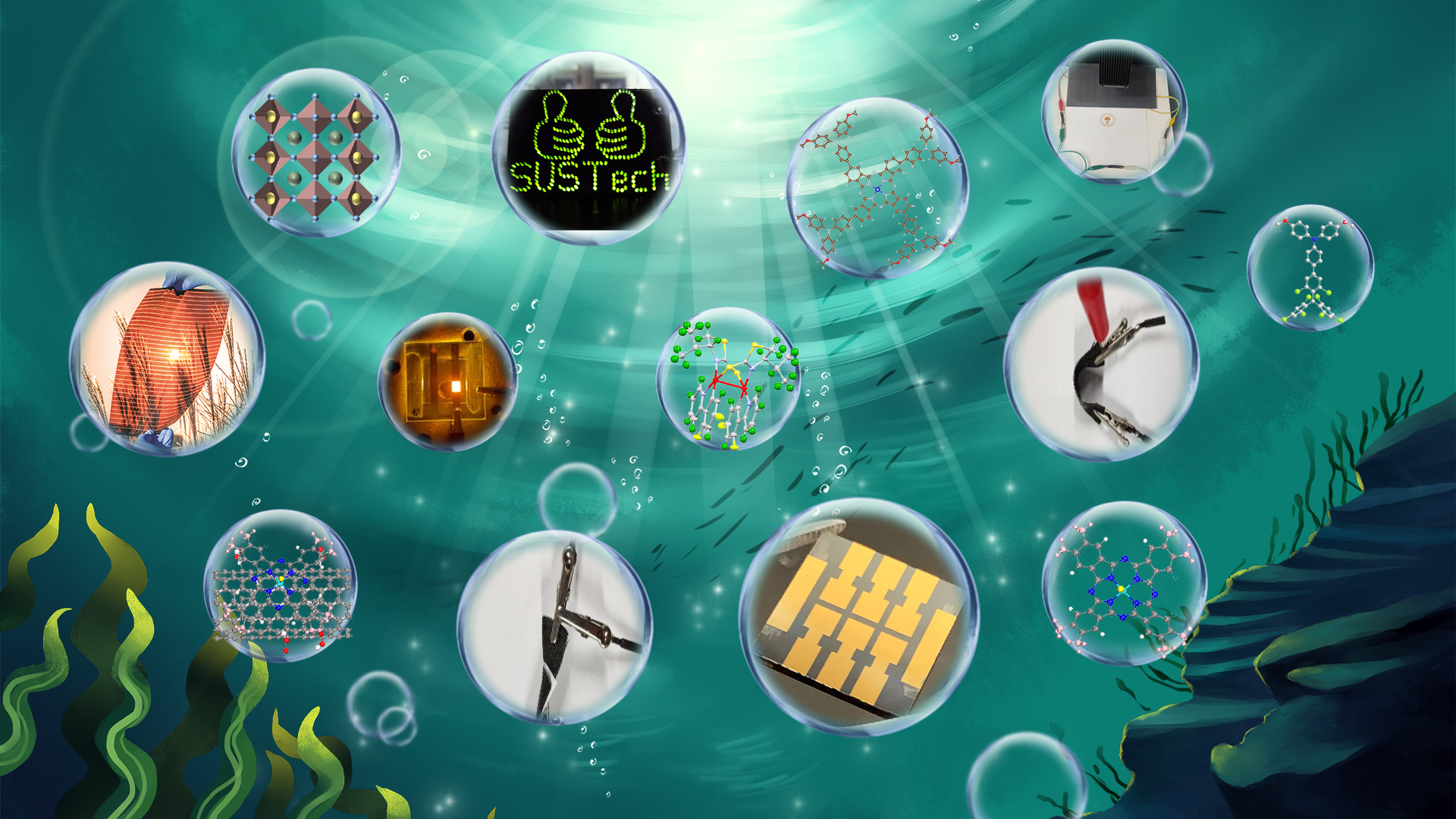
Associate Professor Zong-Xiang Xu’s research group from the Department of Chemistry at the Southern University of Science and Technology (SUSTech) has recently made a series of research progress in the field of energy conversion, storage and application. They have designed and synthesized a series of novel phthalocyanine molecules that can be used as a dopant-free HTM to further improve the efficiency and lifespan of the cell, optimize its structure, and reduce costs.
They have published five academic papers in renowned journals such as Advanced Functional Materials, Small, Chemical Engineering Journal, Journal of Energy Chemistry, and Angewandte Chemie.
In recent years, Prof. Xu’s research group has published several high-performance dopant-free HTMs based on phthalocyanines (Journal of Energy Chemistry, 2022, 67, 263-275; Small, 2021, 17, 2005216; ACS Applied Materials & Interfaces, 2019, 11, 36535-36543; Advanced Energy Materials, 2019, 9, 1901019).
Guided by a computational model, they designed and synthesized low-cost methylthiol-substituted triphenylamine-functionalized copper phthalocyanine (SMe-TPA-CuPc) as a molecularly engineered phthalocyanine material with rich electron-donating SMe-TPA substitution. This material exhibited high charge carrier mobility, matched HOMO energy levels, excellent thermal stability, and passivation of defects in perovskite solar cells (PSCs) as a dopant-free HTM, showing excellent efficiency and stability.
The device was treated with a thermal annealing process. Due to the strong interaction between the methylthiol and uncoordinated lead in the perovskite, SMe-TPA-CuPc molecules could spontaneously diffuse into the perovskite film, effectively passivating defects in the bulk and at the interface of the perovskite. The best-performing annealed SMe-TPA-CuPc device had a PCE of 21.51%, higher than the unannealed device (PCE of 20.75%) and the reference device based on doped Spiro-OMeTAD (PCE of 20.61%). Furthermore, by utilizing the QAPyBF4 additive developed by the research team (Angewandte Chemie, 2022, 134, e202117) to modify the perovskite of the annealed SMe-TPA-CuPc device, the efficiency was further improved to 23.0%, while exhibiting excellent stability, maintaining 96% of its initial efficiency after aging at 85°C for 3624 hours (Figure 1).
This work highlights the tremendous potential of dopant-free HTMs based on phthalocyanine and the development of high-efficient and stable perovskite solar cells through defect passivation by thermal-induced molecular diffusion.
The related research results, entitled “Dopant-Free Phthalocyanine Hole Conductor with Thermal-Induced Holistic Passivation for Stable Perovskite Solar Cells with 23% Efficiency,” have been published in Advanced Functional Materials.
Ge-Ping Qu, Ying Qiao, and Lei Dong, joint Ph.D. students of SUSTech and the Harbin Institute of Technology (HIT), are the co-first authors of this paper. The corresponding authors included Prof. Jiangzhao Chen from Chongqing University (CQU), and Assoc. Profs. Xihan Chen and Zong-Xiang Xu from SUSTech.

Figure 1. SMe-TPA-CuPc phthalocyanine-based dopant-free hole-transporting materials and perovskite solar cells
At present, high-efficiency dopant-free small-molecule hole transport materials (HTMs) with PCE > 25% have not been achieved, mainly due to the gap between device engineering and molecular design. From the perspective of molecular engineering, Prof. Xu’s team published a review in Small on the chemical design and performance of dopant-free small-molecule hole transport materials in PSCs, discussing dopant-free small-molecule hole transport materials for PSCs.
The chemical structures of molecules with good performance were analyzed, and molecular design was used to achieve efficient, low-cost, and scalable dopant-free hole transport materials. Finally, the commercial prospects of dopant-free small-molecule hole transport materials and the development of long-term stable perovskite solar cells were discussed (Figure 2).
Their results, which have been published in Small, were entitled “Nexuses Between the Chemical Design and Performance of Small Molecule Dopant-Free Hole Transporting Materials in Perovskite Solar Cells”.
Danish Khan, a postdoctoral fellow at SUSTech, is the first author of this paper. Research Asst. Prof. Xiaoyuan Liu and Assoc. Prof. Zong-Xiang Xu from SUSTech are the corresponding authors.
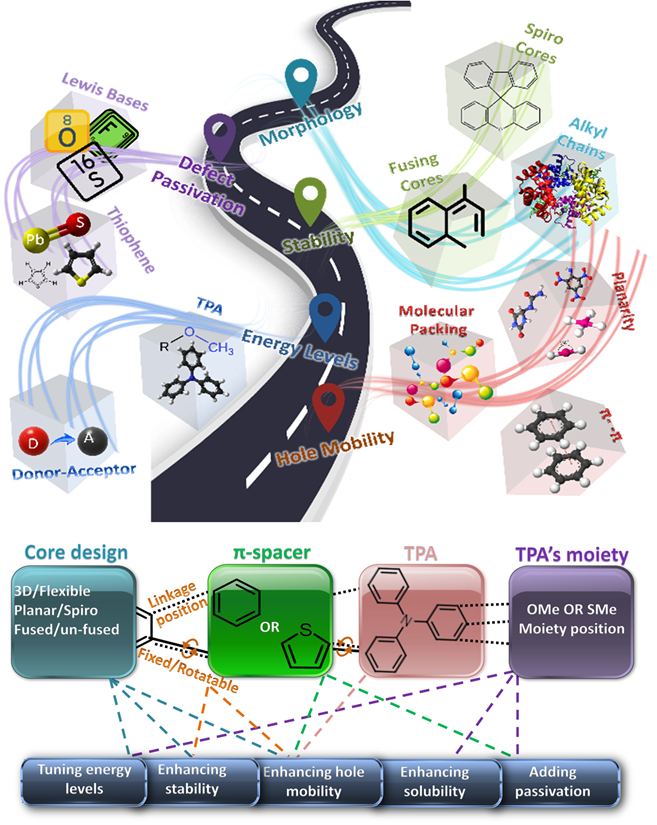
Figure 2. Molecular design strategy of dopant-free hole-transporting materials
The preparation of high-performance perovskite photovoltaic devices heavily relies on the use of toxic solvents, including main solvents and antisolvents, to prepare perovskite precursor solutions and control the crystallization of perovskite films. The use of toxic solvents poses a serious threat to the health and environmental safety of manufacturers. In addition, due to the stability factors of perovskites themselves, they are vulnerable to the influence of water and oxygen in the air. Their preparation mainly needs to be carried out in an inert gas atmosphere without water and oxygen, which increases the process cost. Therefore, it is important to explore the process of using green solvents to prepare devices in an air environment before the upcoming commercialization of PSC.
The researchers designed and synthesized a new type of chlorinated perovskite defect passivating agent, OTTM, which possesses a donor-acceptor structure. By introducing stable free radicals to enhance the passivation ability of the chlorine substitution group, high-quality perovskite films were prepared via a green anti-solvent method in an air environment. The comparison between theoretical calculations and experimental results confirmed that free radicals and electron-donating groups such as triphenylamine increased the electron density of the chlorine substitution group in OTTM, enhancing the coordination between the passivating agent and lead defects and thereby reducing the defects in perovskite.
The optimization of the interface energy level alignment between the perovskite and hole transport layers by OTTM treatment reduced non-radiative carrier recombination and improved carrier transportation. This resulted in a photovoltaic conversion efficiency of over 21% for the device based on MAPbI3 perovskite prepared via a green anti-solvent method in an air environment, which is the highest performance reported for products of the same type so far (Figure 3).
These research findings, entitled “Radical reinforced defect passivation strategy for efficient and stable MAPbI3 perovskite solar cells fabricated in air using a green anti-solvent process,” have been published in the Chemical Engineering Journal.
Pengfei Xie, a joint Ph.D. student of SUSTech and HIT, and Hui Xiao, a postdoctoral fellow at SUSTech, are the co-first authors of this paper. Prof. Jiangzhao Chen from CQU, along with Asst. Prof. Xiaoyuan Liu and Assoc. Prof. Zong-Xiang Xu from SUSTech, are the co-corresponding authors.
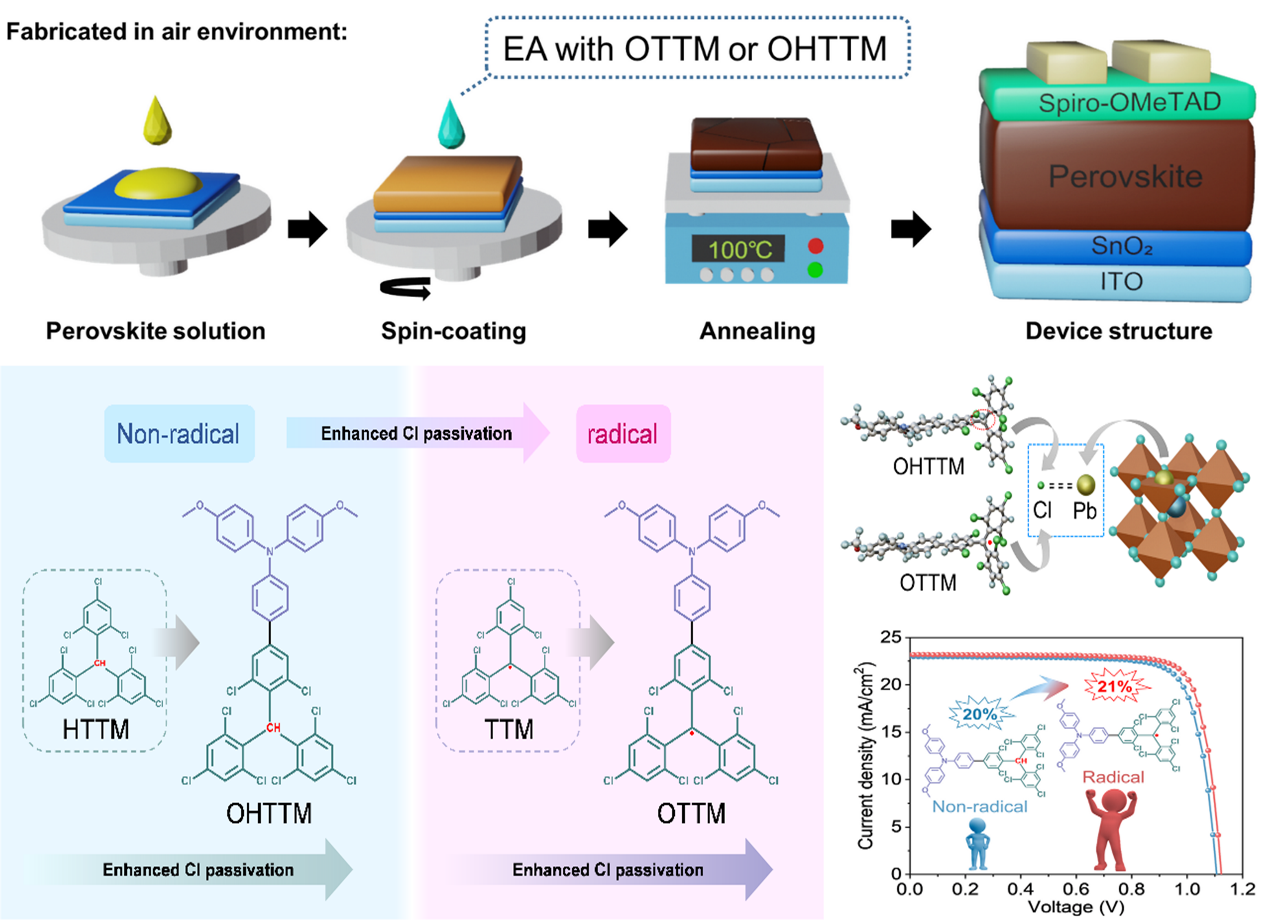
Figure 3. High-performance perovskite solar cell fabricated by a green process with free-radical additive
Flexible electronics have a wide range of applications, such as wearable displays, biomedical applications, and soft robots. If they can be bent, twisted, and stretched, they can bring special functional uses and experiences to products. Although the circuits of these devices are becoming more and more flexible, the batteries and supercapacitors that power them are still rigid. Pure solid-state supercapacitors can fill the gap between the insufficient power density of batteries and the energy density of traditional capacitors. They have great application potential, becoming a research hotspot in the field of flexible energy storage.
Prof. Xu’s group used their self-developed non-peripheral octamethyl-substituted nickel phthalocyanine (NiMe2Pc) nanowires and carboxylated carbon nanotubes (CNT-COOH) to prepare nanocomposites for flexible supercapacitors. The π-π interaction and hydrogen bonding between the phthalocyanine molecules and carbon nanotubes, combined with a special dendritic nanostructure, gave the electrode material high redox activity, rapid electron and electrolyte ion transport channels, excellent chemical and structural stability, and good mechanical flexibility.
The specific capacitance reached 330.5 F/g, and after 35,000 cycles at 8 A/g, it still had a capacitance retention rate of 111.6%. The all-solid-state flexible supercapacitor constructed with it had an energy density of 52.1 Wh/kg and maintained 88.4% of its capacitance after 5,000 bending cycles. The device showed good energy storage performance under actual working conditions such as bending and twisting (Figure 4).
These research findings, entitled “Peripheral octamethyl-substituted nickel(II)-phthalocyanine-decorated carbon-nanotube electrodes for high-performance all-solid-state flexible symmetric supercapacitors,” have been published in the Journal of Energy Chemistry.
Yu Wang and Minzhang Li, master’s and doctoral students at SUSTech, respectively, are the co-first authors of this paper. Research Asst. Prof. Rajendran Ramachandran and Assoc. Prof. Zong-Xiang Xu, both from SUSTech, are the co-corresponding authors.
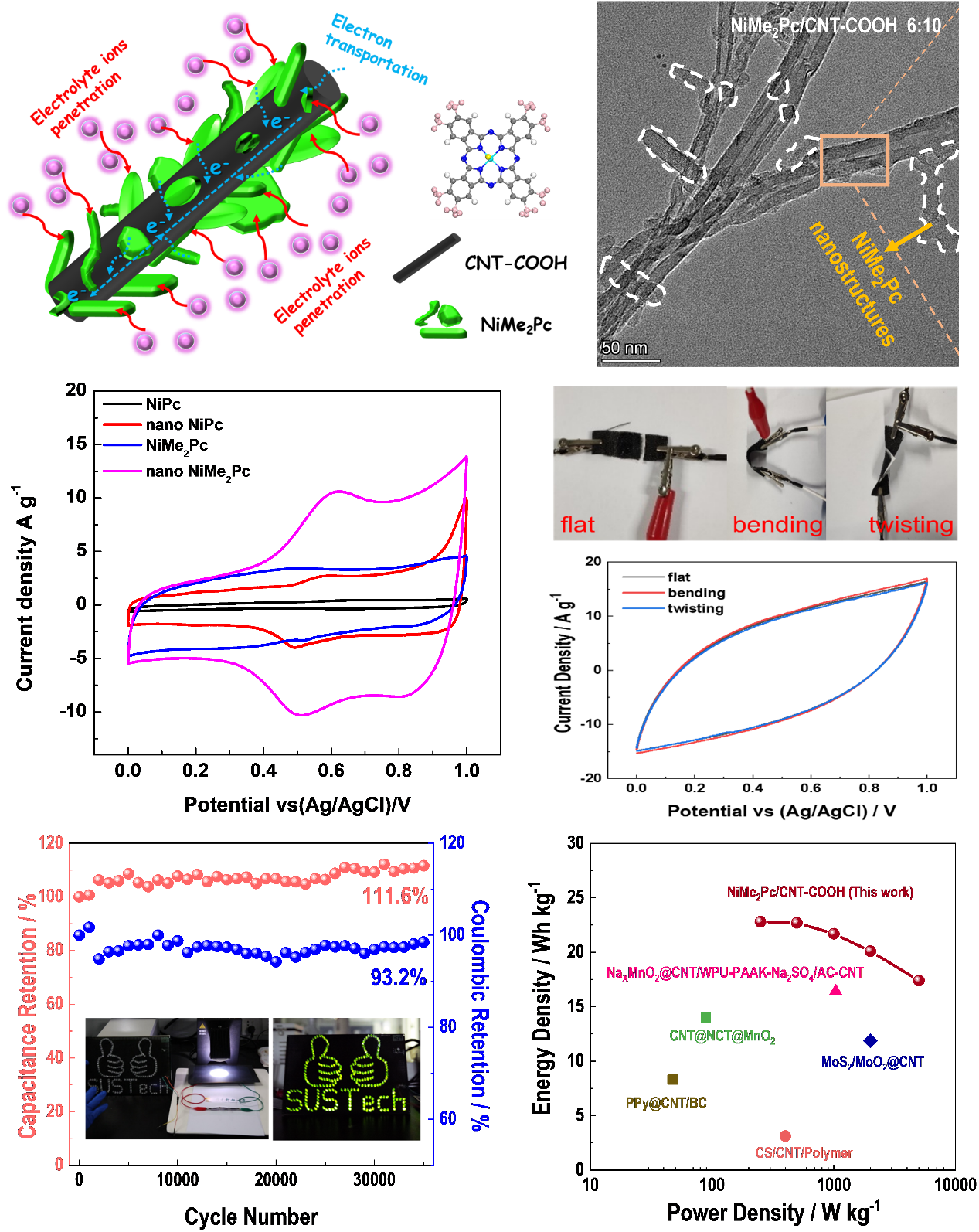
Figure 4. Phthalocyanine composite-based flexible supercapacitor
Platinum(II) complexes have rich transition states and excellent phosphorescent properties, and have broad applications in the field of organic optoelectronics. However, the square-planar geometry of these platinum(II) complexes, due to intramolecular and intermolecular Pt-Pt interactions and strong π-π interactions, leads to metal-induced chirality loss and “aggregation-caused quenching” of emission, severely limiting their application in chiral luminescence.
Prof. Xu’s group collaborated with Prof. Haifeng Xiang from Sichuan University on a design strategy of mutually locked binuclear Pt(II) complexes and shortening the intermolecular Pt-Pt distance to design and synthesize a new soft-bridged binuclear platinum(II) complex (F2-ppy)2Pt2(μ-L)2 (2F-ppy = 2-(4′,6′-difluorophenyl)pyridine, μ-L = oxazolidine-2-thione and thiazolidine-2-thione), achieving high phosphorescence quantum yield and metal-induced chirality.
The soft-bridged ligands in the small conjugated system not only help to improve solubility, synthetic, and enantiomer separation, but also introduce point chirality from amino acids to achieve efficient diastereoselectivity (up to 99%). In addition, the soft-bridged ligands can well regulate the intramolecular Pt-Pt interactions (2.910-2.985 Å), thereby shortening the intermolecular Pt-Pt distance, and for the first time, achieving a phosphorescence quantum yield of 100% for binuclear platinum complexes.
These complexes are used as emitters in efficient solution-processed circularly polarized organic light-emitting diodes (CP-OLEDs), achieving optimum device brightness, brightness efficiency, external quantum efficiency, and asymmetry factor of 6.51 × 103 cd m-2, 54.0 cd A-1, 27.4%, and 2.81 × 10-3, respectively, which are the best-reported performance of Pt(II) complex-based CP-OLEDs (Figure 5). This study provides a possibility for the application of new structural elements in chiral self-sorting and chiral optoelectronic materials.
These research findings, entitled “Metal-Induced Planar Chirality of Soft-Bridged Binuclear Platinum(II) Complexes: 100% Phosphorescence Quantum Yields, Chiral Self-Sorting, and Circularly Polarized Luminescence,” have been published in Angewandte Chemie.
Postdoctoral fellow Hui Xiao from SUSTech and Dr. Jintong Song from Sichuan University are the co-first authors of this paper. Prof. Haifeng Xiang from Sichuan University and Assoc. Prof. Zong-Xiang Xu from SUSTech are the co-corresponding authors.
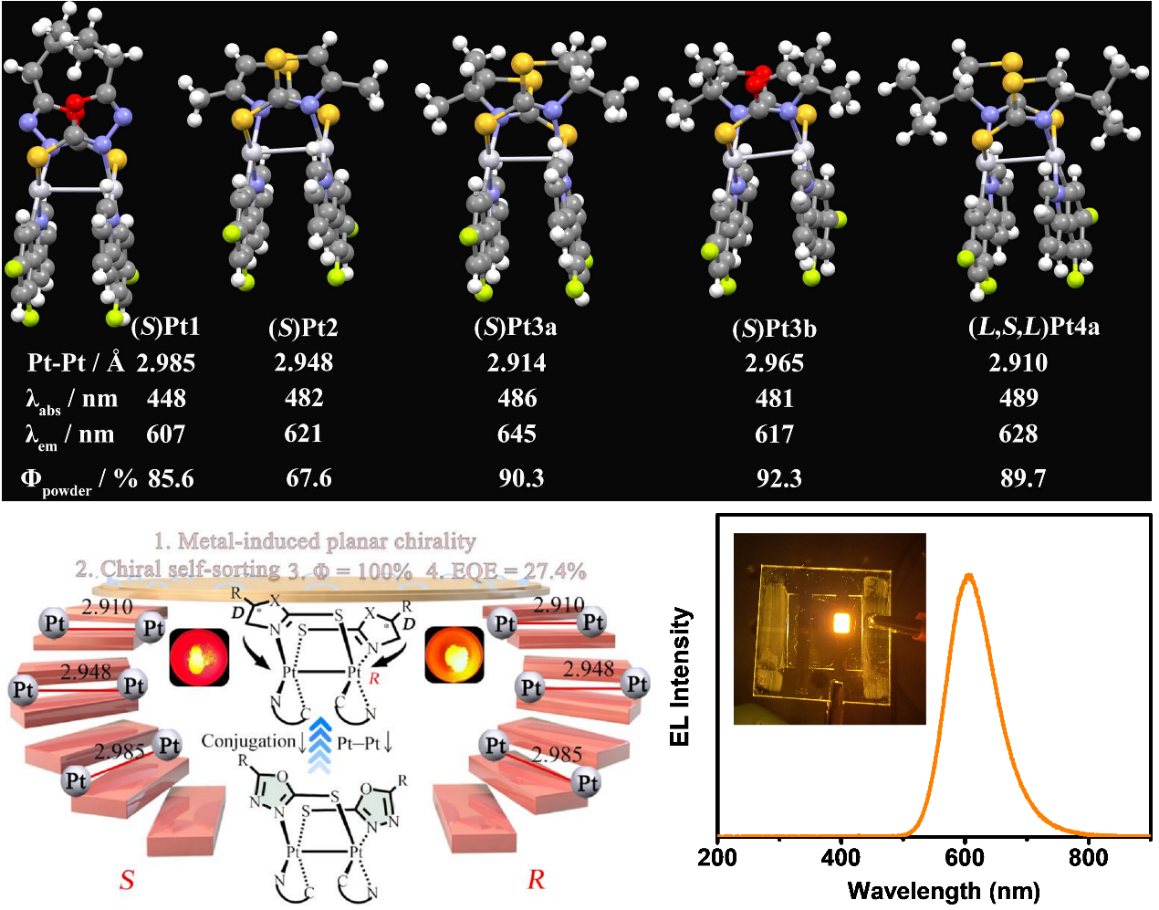
Figure 5. Novel soft-bridged binuclear Pt(II) complexes
The above research has been supported by the National Natural Science Foundation of China (NSFC), Guangdong-Hong Kong-Macao Joint Laboratory for Photonic-Thermal-Electrical Energy Materials and Devices, Major Program of Guangdong Basic and Applied Research from Guangdong Provincial Department of Science and Technology, and Public Analysis & Testing Center of SUSTech.
Paper links (In order of appearance above):
Advanced Functional Materials: https://doi.org/10.1002/adfm.202206585
Small: https://onlinelibrary.wiley.com/doi/abs/10.1002/smll.202205926
Chemical Engineering Journal: https://doi.org/10.1016/j.cej.2023.142328
Journal of Energy Chemistry: https://doi.org/10.1016/j.jechem.2022.08.046
Angewandte Chemie: https://onlinelibrary.wiley.com/doi/10.1002/anie.202302011
To read all stories about SUSTech science, subscribe to the monthly SUSTech Newsletter.
Proofread ByAdrian Cremin, Yingying XIA
Photo By